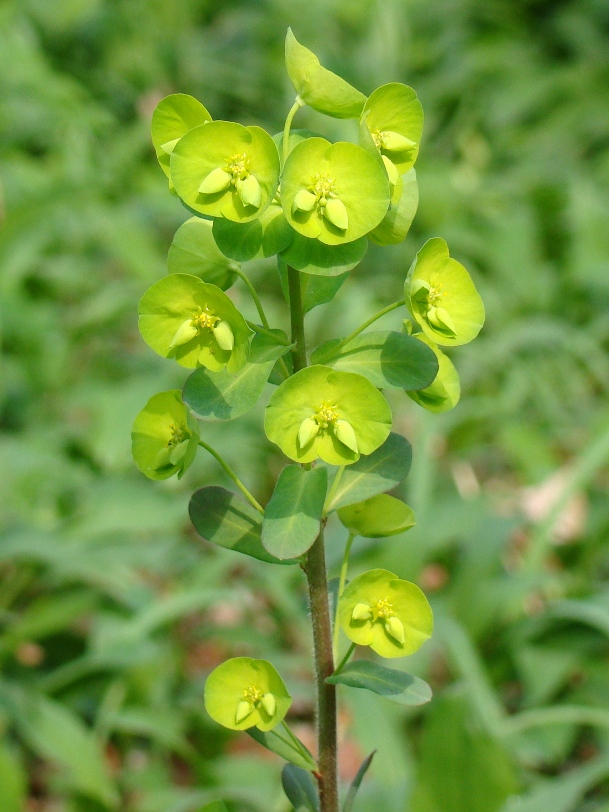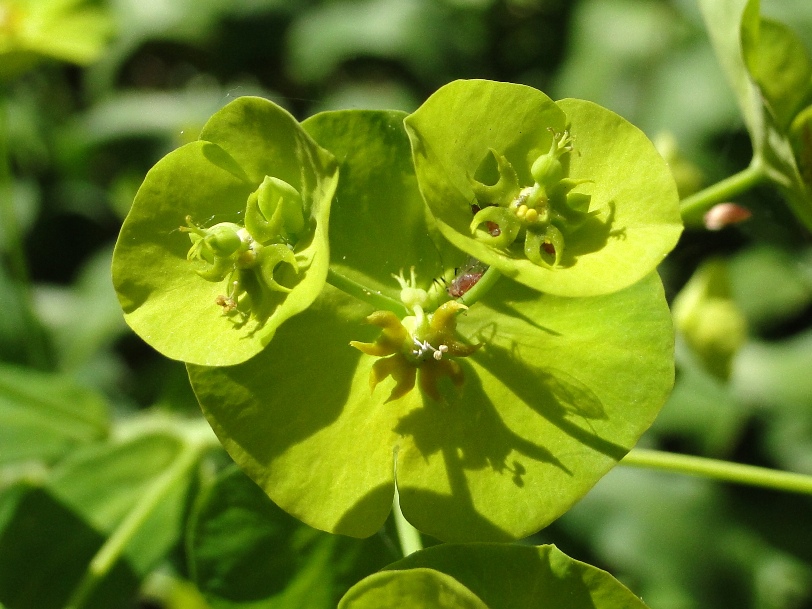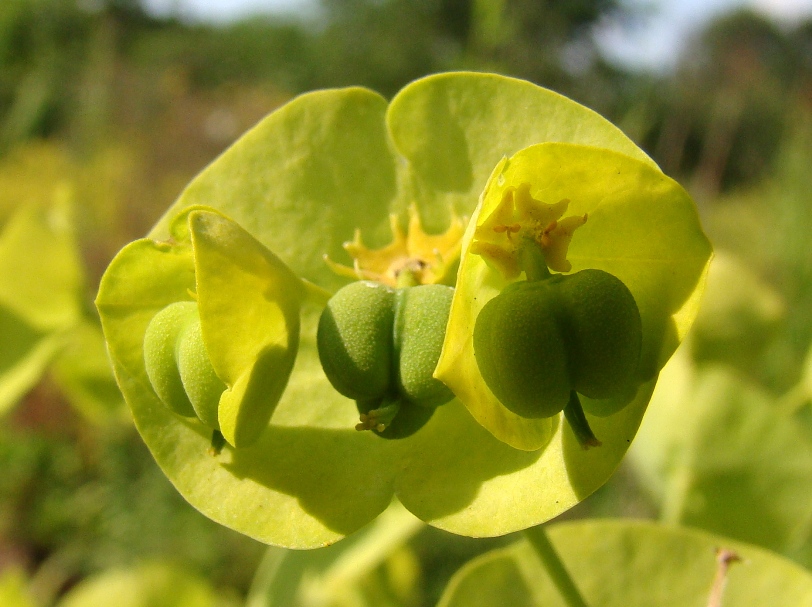Wood Spurge
Euphorbia amygdaloides
Spurge family (Euphorbiaceae)
Burning latex
Not all plants have a beneficial effect. Wood spurge seeds are poisonous and the white, milky sap, which is released when a stem or leaf breaks, can bite and burn. It is to these properties that the plant owes it Dutch name, the almond wolf’s milk. According to legend the sap was used by herbalists for the removal of warts.
In the Netherlands the wood spurge is very rare in the wild but can sometimes be found in fairly open deciduous forests on the moist, calcareous soils in the province of Limburg. In April and May yellow-green flowers arise from the top of the plant in an umbel. Despite the fact that the flowers are not obvious to us, insects have no problem finding them thanks to the presence of nectar glands.
Themes
Crown jewel in the Nijmegen Botanic Garden.
The nectaries on the edge of the false-flowers are crescent-shaped with horn-shaped ends. They are loved by bees.
The latex burns when touched and the seeds are toxic.
Formerly used in the treatment of warts and tuberculosis; witch herb.
Details
| Description: | Herb, 30-100 cm. |
|---|---|
| Distributions: | Europe, north africa, southwest asia |
| Habitat: | Forests and clearings. in association with old, large forests. plant association: wood spurge is an indicator species for the oak-hornbeam forest (stellario-carpinetum) |
| Year cycle: | Perennial (polycarpic evergreen) |
| Hardiness: | Colder than -4 f (very hardy) |
| Flowering period: | April - mei |
| Flower color: | Yellow, green |
| Notes on flowers: | Unisexual and monoecious (separate male and female flowers but on the same plant); from the center of the rosette develops the richly branched, umbelliferous inflorescence; paired bracts are fused at the base to encircle the stem. |
| Fruit color: | White, green |
| Notes on fruits: | A capsular fruit. the bare fruit is 3-4 mm in size with fine dots and three grooves. the seeds are almost black. |
| At its best: | April - mei |



